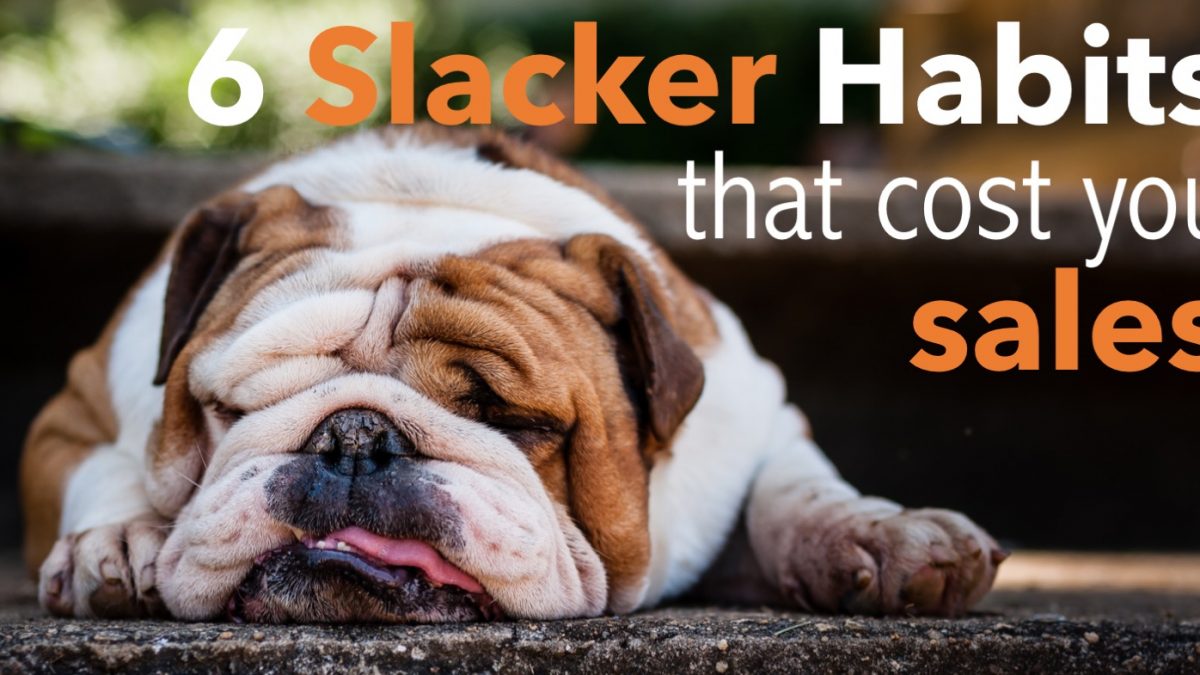Changing habits is difficult, but it can be done. Check to see if any of these sales habits inhibit you from reaching your goals.
We all have areas of improvement – personally and professionally. But habits have a way of sticking with us over time and they can be challenging to shake. Don’t let them keep you from developing into a better salesperson. With some self-reflection, brutal honesty and healthy feedback from a trusted confidant about your sales performance, you can dramatically improve your sales results.
Here are six sales habits that impede sales performance with some ideas to help you break away from these unproductive patterns:
1. Presumptive Solutions
These are solutions or benefit statements used to grab the attention of a potential buyer early in the sales process like, “I can save you money! We will increase your sales. You’ll see an increase in cash flow.” You haven’t found out if these are the benefits the prospect wants. Be patient and follow the sales process to gather enough info first.
Idea: Lead off appointments by indicating you wish to learn more about the buyers’ objectives. Offer on-target solutions only after your needs analysis.
2. Referral Selling Exclusively
I love referrals. They should certainly be a part of your lead generation strategy. However, if your referral sources go away (mass firings, promoted out of the department or retire) then so do your referrals.
Idea: Expand your prospecting to include at least three primary means for acquiring new business like networking, direct marketing, social media, or target calling.
3. Product-Focused Engagement
Leading with your product or service diminishes your positioning in the mind of the buyer. They’re not buying a product, as much as a vital resolution to a problem or a means to enhance what they already have. Help them make the connection between your offerings and the gap they want to fill.
Idea: Use a business-focused approach. Ask questions about the issues that affect their business. Seek to understand how your solution helps them accomplish their specific business strategy.
4. Presenting to Unqualified Buyers
Sales reps waste more time and effort attempting to get non-buyers to buy than almost anything else. Your job is to qualify first – sell second. Chances are quite low closing a sale with an unqualified prospect. Save time and energy by moving on to prospects who meet criteria for high probability transactions.
Idea: Clearly define each of your qualifiers. Create a set of specific questions for each qualifier to sufficiently determine the validity of each prospect.
5. Assuming Smaller Deals are Easier/Quicker
Chasing after low-hanging fruit can prove unproductive. The best opportunities are with those who fit your ideal customer profile and are seeking a legitimate solution. Price is less of an issue to these buyers. Solving their issue or helping the customer achieve their objective takes precedence.
Idea: Focus your attention on target buyers within the 80% zone. These buyers possess 80% of your predefined criteria for a good customer. Let go of prospects outside of this zone.
6. Ambiguous Sales Conversations
Asking vague questions and accepting nebulous answers from buyers leads to unintended consequences – deals that don’t close, inaccurate forecasts, frustrated sales managers, and unfulfilled sales quotas. Avoid generalizations. List all the “facts” that you need to acquire from the prospect during a sales call prior to the meeting.
Idea: Review you top 10-20 sales questions to ensure they are clear. Don’t ask, “When do you want delivery?” Prospects can easily say “Right away” leading the sales rep to assume a purchase is imminent. That’s not always the case. Instead, ask “What date do you want delivery?” Requesting a specific date helps you determine their true level of urgency.
Sales habits are a part of the professionals experience – good or bad. Evaluate the sales habits that may be affecting your performance and select just one to eliminate or improve. Over time you’ll see the difference just one adjustment can make.

